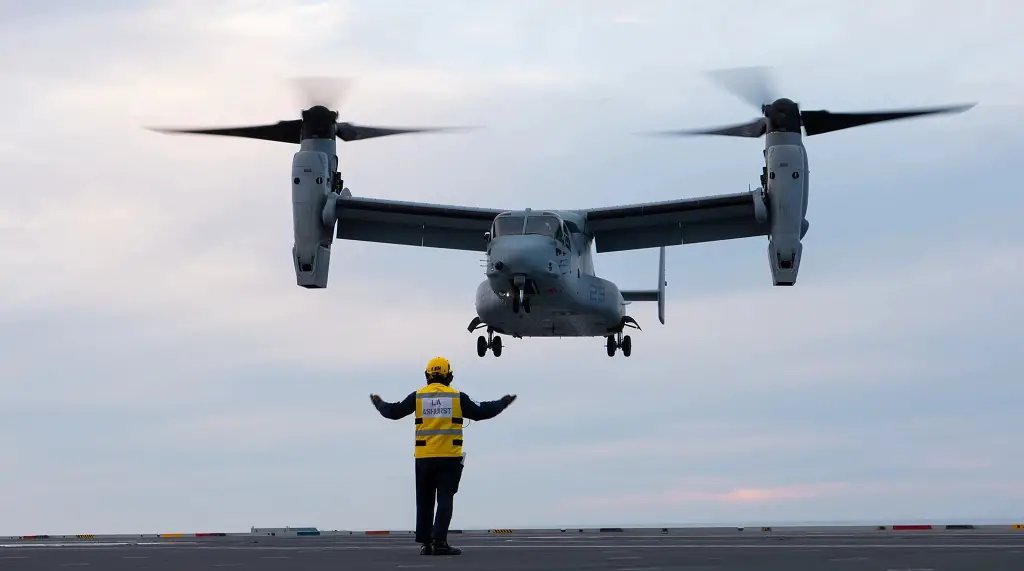[ad_1]

NAVAIR will lift the V-22 grounding next week, after plans for a safe and measured return to flight operations have been approved.
The V-22 Osprey fleet is expected to return to flight next week, after U.S. Defense Secretary Lloyd Austin endorsed the military services’ plans for a safe and measured return to operations. According to The Associated Press, following a meeting with Austin and the top service leaders, officials said that Naval Air Systems Command will lift the grounding and allow the services to begin implementing their plans to resume the tiltrotor’s flight operations.
The V-22s operated by the U.S. Air Force, Navy and Marine Corps, as well as the ones of the Japan Ground Self Defense Force, have been grounded following the crash that involved a USAF CV-22B off the coast of Yakushima Island, Japan, on Nov. 29, 2023. The worldwide standdown was ordered after preliminary investigation information indicated a potential materiel failure caused the CV-22B crash, killing 8 crew members.
While the incident is still under investigation, the Air Force said it has identified the cause of the crash, but it hasn’t been able to determine the reason of the failure. In the meanwhile, the services planned additional safety checks and more conservative operations with the Osprey to mitigate the known material failure. The same plans will be shared with Japan, the only foreign operator of the V-22.
Flight operations of the tiltrotor in Japan, however, will resume later. In fact, the head of NAVAIR is expected to fly to Japan next week to brief the Ministry of Defense and Japanese government, and no Ospreys will fly until that briefing has occurred, according to officials who spoke on the condition of anonymity to The Associated Press.
The V-22 Osprey have a long story of groundings following mishaps. The latest one is the third safety standdown since a U.S. Air Force CV-22B carried out an emergency landing in a natural reserve in Norway and remained stranded there for six weeks in 2022.
The length of this grounding forced the services to take measures to avoid a capability gap until the Osprey was cleared again for flight. The U.S. Navy, in fact, had to surge its remaining C-2A Greyhounds in order to continue to meet the Carrier Onboard Delivery mission, while the U.S. Army used its CH-47F Chinook helicopters to replace the MV-22 from the USMC’s Marine Helicopter Squadron One (HMX-1) and support presidential airlift support missions.
A small number of USMC MV-22s deployed to Djibouti have had an exemption to the grounding since Jan. 17, 2024 due to mission needs and have flown since then without incident, Military Times reported.
[ad_2]
Source link
